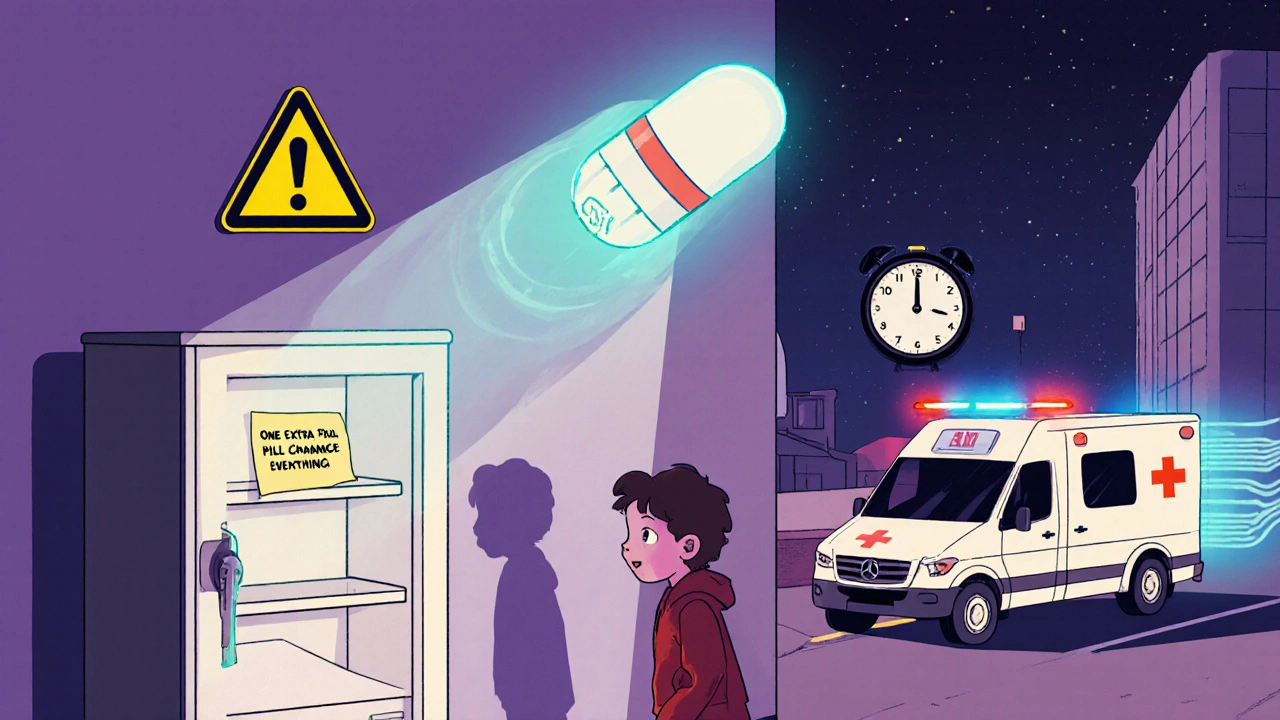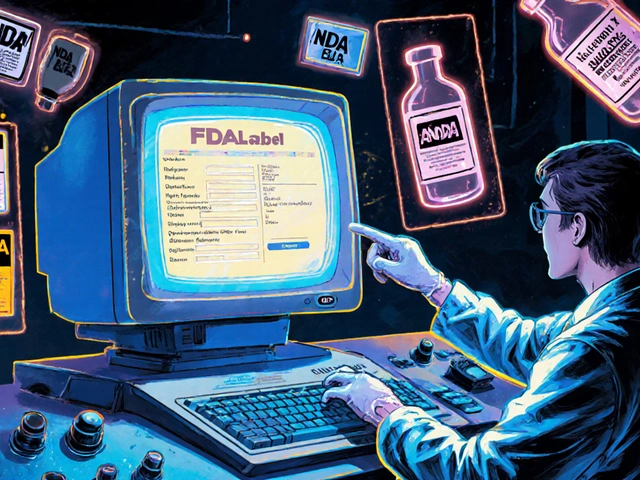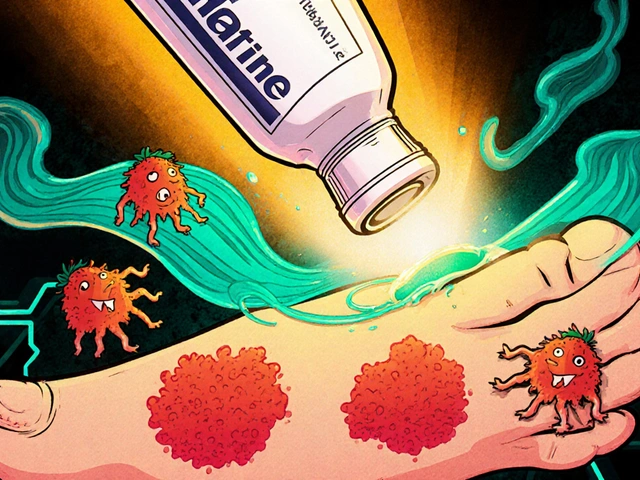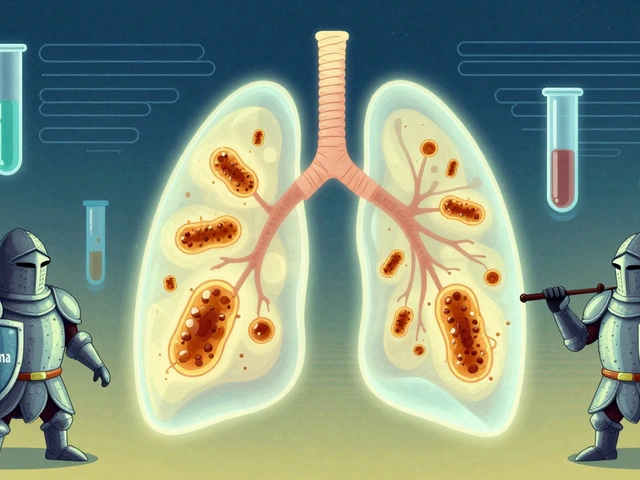Atomoxetine, sold under the brand name Strattera, is a non-stimulant medication used to treat ADHD in children, teens, and adults. Unlike stimulants like Adderall or Ritalin, it works by increasing norepinephrine in the brain to improve focus and reduce impulsivity. It’s often chosen when stimulants cause anxiety, sleep issues, or aren’t tolerated. But like any medication, taking too much can be dangerous. An atomoxetine overdose doesn’t always look like a dramatic emergency-but it can be life-threatening if ignored.
What Happens When You Take Too Much Atomoxetine?
There’s no single number that defines an overdose. For adults, doses over 100 mg in a single day can cause serious symptoms. In children, even 50 mg or more may lead to toxicity, depending on weight and tolerance. Most overdose cases happen accidentally-like taking a double dose because a pill was missed-or intentionally, often in suicide attempts.
Atomoxetine is metabolized by the liver, mainly through the CYP2D6 enzyme. People who are slow metabolizers (about 7% of Caucasians) build up the drug faster, making them more vulnerable to overdose even at normal doses. This is why doctors start with lower doses for these individuals.
The effects of an overdose don’t always show up right away. Symptoms can begin within 1 to 4 hours, but sometimes take up to 12 hours to fully develop. That delay is why waiting to see if you "feel okay" after taking too much is a dangerous mistake.
Signs of an Atomoxetine Overdose
Overdose symptoms range from mild to severe. They’re not always obvious, and many people mistake them for a bad reaction or just feeling "off." Here’s what to look for:
- Fast or irregular heartbeat (tachycardia or arrhythmias)-this is one of the most common and dangerous signs
- High blood pressure-systolic readings over 180 mmHg can strain the heart and blood vessels
- Extreme drowsiness or agitation-some people become lethargic, others become restless or aggressive
- Nausea, vomiting, or stomach pain-often mistaken for the flu
- Blurred vision or dilated pupils
- Shaking or tremors-especially in the hands
- Confusion, hallucinations, or delusions-rare but serious
- Seizures-a medical emergency that requires immediate intervention
- Loss of consciousness-this is a critical red flag
One of the biggest risks is cardiac toxicity. Atomoxetine can prolong the QT interval on an ECG, which can lead to a dangerous heart rhythm called torsades de pointes. This can cause sudden cardiac arrest-even in people with no prior heart problems.
What to Do If You Suspect an Overdose
If you or someone else has taken too much atomoxetine, don’t wait for symptoms to get worse. Call emergency services immediately. In New Zealand, dial 111. In the U.S., call 911. In the UK, call 999. Don’t try to drive yourself to the hospital unless you’re fully alert and stable.
While waiting for help:
- Keep the person awake and sitting up if possible
- Do NOT induce vomiting unless told to by a poison control center
- Have the medication bottle ready to show medical staff-this helps them know the exact dose and formulation
- If the person is unconscious but breathing, place them in the recovery position
- If they stop breathing, begin CPR if you’re trained
Emergency responders will likely give oxygen, start IV fluids, and monitor heart rhythm continuously. In the hospital, they’ll check blood levels, do an ECG, and run blood tests to assess liver and kidney function.
How Doctors Treat Atomoxetine Overdose
There’s no specific antidote for atomoxetine. Treatment is all about managing symptoms and supporting the body until the drug is cleared.
Common hospital treatments include:
- Activated charcoal-given within 1-2 hours of ingestion to reduce absorption, but only if the person is alert and able to swallow
- IV fluids-to maintain blood pressure and help flush the drug through the kidneys
- Heart monitoring-continuous ECG for at least 12-24 hours to catch arrhythmias early
- Beta-blockers-like metoprolol or esmolol, used to control rapid heart rate and high blood pressure
- Antiseizure medication-if seizures occur, lorazepam or levetiracetam may be used
- Sedation-for severe agitation or hallucinations, benzodiazepines like diazepam are often effective
- Intubation and ventilation-only if breathing fails or the person becomes unresponsive
Most patients recover fully if treated within 6-8 hours. But delays can lead to complications like stroke, heart attack, or permanent brain damage from lack of oxygen during a seizure or cardiac event.
Who’s at Highest Risk?
Not everyone who takes too much atomoxetine will have a severe reaction. But certain factors raise the risk:
- Children and teens-their bodies process the drug differently and are more sensitive to its effects
- People with heart conditions-especially those with arrhythmias, long QT syndrome, or untreated high blood pressure
- Slow CYP2D6 metabolizers-genetic variation means the drug stays in their system longer
- People mixing atomoxetine with other drugs-like antidepressants (SSRIs, SNRIs), MAOIs, or alcohol-can increase toxicity
- Those with liver disease-reduces the body’s ability to break down the drug
Even if you’ve been taking atomoxetine for months without issues, an overdose can still happen suddenly. One extra pill, one missed meal, or one bad night’s sleep can change how your body handles the drug.

Preventing an Overdose
The best treatment is prevention. Here’s how to stay safe:
- Always take atomoxetine exactly as prescribed-never adjust the dose without talking to your doctor
- Use a pill organizer if you’re on multiple medications
- Keep your medication locked up if children or teens are in the home
- Never share your prescription-what’s safe for you could be dangerous for someone else
- Set phone reminders for doses to avoid double-taking
- Store the bottle in its original packaging with the label intact-this helps medical staff identify the drug quickly in an emergency
- Know your doctor’s after-hours contact info or the poison control number in your country
Many people feel embarrassed about taking too much medication. But delaying help because of shame can be deadly. Emergency teams are trained to handle these situations without judgment. Your safety matters more than guilt.
What Happens After an Overdose?
If you survive an overdose, you’ll likely be monitored for 24-48 hours. Once stable, you’ll be referred for follow-up care. This isn’t just about physical recovery-it’s about understanding why it happened.
If the overdose was accidental, your doctor may adjust your dose, switch medications, or add support tools like pill dispensers. If it was intentional, mental health support is essential. ADHD is often linked with depression, anxiety, or impulsivity disorders. Treating the root cause is just as important as treating the overdose.
Follow-up appointments are non-negotiable. Even if you feel fine, your heart and liver need time to recover. Blood tests and ECGs may be repeated a week later to make sure everything has returned to normal.
When to Call Poison Control
You don’t need to wait for symptoms to appear. If you’re unsure whether you’ve taken too much, call your local poison control center. In New Zealand, it’s 0800 764 766 (Poison Centre). In the U.S., it’s 1-800-222-1222. They’re available 24/7 and can give you real-time advice based on your weight, age, and how much you took.
They’ll ask:
- How much atomoxetine was taken?
- When was it taken?
- Are there any symptoms?
- Are other drugs or alcohol involved?
Don’t hesitate to call-even if you think it’s "not that bad." It’s better to be safe.
Can you die from an atomoxetine overdose?
Yes, though it’s rare. Deaths have been reported, usually when large doses are taken, especially in combination with other drugs or in people with heart conditions. The main causes are cardiac arrhythmias, seizures, or respiratory failure. Prompt medical treatment greatly improves survival.
How long does atomoxetine stay in your system?
In healthy adults, atomoxetine has a half-life of about 5 to 7 hours. But for slow metabolizers, it can last up to 24 hours. It takes roughly 4-5 half-lives for the drug to be mostly cleared, so it can remain in your body for 1-2 days after an overdose. This is why monitoring for 24 hours is standard.
Is atomoxetine more dangerous than stimulant ADHD meds?
It’s not necessarily more dangerous, but the risks are different. Stimulants like Adderall can cause extreme highs, panic, and overheating. Atomoxetine’s danger lies in its delayed, hidden effects-especially on the heart. Overdose symptoms are less obvious at first, which can lead to delays in seeking help. Both require caution.
Can you overdose on atomoxetine by taking it daily as prescribed?
Not if you’re taking the correct dose. But people with liver disease or who are slow metabolizers can build up the drug over time, leading to toxicity even at prescribed doses. That’s why doctors monitor blood pressure and heart rate during the first few weeks of treatment. If you feel unusually jittery, have chest pain, or see your heart racing, contact your doctor immediately.
What should I do if my child accidentally takes a pill?
Call poison control immediately-even if your child seems fine. A single pill can be dangerous for a small child. Do not wait for symptoms. Bring the medication bottle to the hospital if you’re advised to go. Keep all medications locked away and out of reach of children.






Leslie Schnack
October 31, 2025 AT 03:40I took atomoxetine for a year and never knew about the CYP2D6 slow metabolizer thing until now. My doctor just gave me the standard dose. I started getting weird heart palpitations after a few months but thought it was just stress. Turns out I’m a slow metabolizer. They switched me to bupropion and I’ve been fine since. If you’re on this med and feel off, get tested. It’s not just about dosage-it’s your genetics.
Also, don’t ignore the delayed symptoms. I took an extra pill once because I forgot I already took one. Felt fine for 8 hours. Then I woke up at 3 AM with my heart pounding like a drum. Called poison control-they told me to go to the ER. Saved my life.
Why isn’t this info on the pill bottle?
Melissa Kummer
November 1, 2025 AT 17:44Thank you for sharing this vital information with such clarity and care. It is imperative that individuals and families understand the nuanced risks associated with non-stimulant ADHD medications. Atomoxetine, while often perceived as ‘safer,’ carries latent dangers that are easily overlooked due to their insidious onset. Please continue advocating for patient education-this is public health in action.
Always consult your physician before altering dosage, and never underestimate the power of poison control. They are your first line of defense, not a last resort.
andrea navio quiros
November 2, 2025 AT 09:22so like the liver is the main thing breaking it down right and if your liver is slow then the drug just sits there piling up like unpaid bills and then boom your heart goes nuts like a broken alarm clock and no one knows why because you felt fine for hours
why dont they just test everyone for cyp2d6 before prescribing this like its basic biochemistry why are we still playing russian roulette with meds
also the qt prolongation thing is wild like you could be totally normal then one day your heart just decides to do the cha-cha and thats it
and why is activated charcoal only good if you swallow it within two hours what if you dont even know you overdosed till three hours later
someone needs to make a flowchart for this
Pradeep Kumar
November 3, 2025 AT 17:03As someone from India, I’ve seen too many families keep meds unlocked and kids grab them like candy. My cousin’s 7-year-old took one pill of his dad’s Strattera and ended up in ICU for 3 days. No symptoms at first. Just sleepy. Parents thought he was tired from playing.
PLEASE lock your meds. Even one pill can kill a child.
❤️ Share this with your family, friends, neighbors. Safety is not a luxury. It’s a responsibility.
Justin Vaughan
November 4, 2025 AT 16:59Biggest takeaway: You don’t need to feel ‘bad’ to be in danger. That’s the trap. Atomoxetine doesn’t scream-it whispers. And by the time you hear it, it’s too late.
I’ve had friends on stimulants who go full zombie mode or panic attack after a double dose. But atomoxetine? It’s the quiet killer. No euphoria, no crash. Just… slow-motion chaos. Heart racing. Vision blurring. Confusion. You think you’re just tired. You’re not. You’re dying inside.
Call poison control. Always. Even if you’re embarrassed. Even if you think it’s ‘just one pill.’ They’ve seen it all. They won’t judge. They’ll save you.
And if you’re a slow metabolizer? Tell your doctor. Get tested. Don’t wait for a near-death experience to learn your body’s secret.
Keerthi Kumar
November 4, 2025 AT 18:24As a mother of a teen with ADHD, and also as someone who works in community health outreach in rural India, I can’t stress this enough: Medication safety is not a personal responsibility-it’s a communal one.
We need school nurses to educate students about their meds. We need pharmacies to include simple, illustrated safety cards with every prescription. We need community centers to host monthly ‘Medication Safety Hours’ where elders and teens can ask questions without shame.
And yes-lock your pills. Not just for kids, but for depressed teens who might be thinking about ending it all. Atomoxetine is not a ‘gentle’ drug. It’s a silent storm.
Let’s stop treating mental health meds like vitamins. They’re not. They’re precision tools. And like any tool, misuse can cut deep.
Jim Peddle
November 5, 2025 AT 09:09Let’s be real. This whole article is a pharmaceutical marketing ploy wrapped in fear. Atomoxetine is a $100/month drug with no real advantage over generics or stimulants. The ‘slow metabolizer’ angle? That’s just a way to sell genetic testing. The ‘delayed symptoms’ scare tactic? Designed to keep you coming back for ‘monitoring.’
And why is poison control listed like it’s a lifesaver? Because the pharma companies own them. They fund the hotlines. They write the scripts.
Meanwhile, real dangers-like benzodiazepine withdrawals or antipsychotic-induced diabetes-are ignored. But hey, let’s panic about one non-stimulant that’s been on the market for 20 years.
Wake up. This isn’t medicine. It’s a business model.
S Love
November 7, 2025 AT 06:42Minor correction: The half-life of atomoxetine in extensive metabolizers is approximately 5 hours, not 5–7. The 7-hour figure applies to slow metabolizers only. Also, activated charcoal is most effective within 60 minutes, not 1–2 hours, as gastric emptying occurs rapidly after ingestion. The 2-hour window is a conservative estimate used for legal and clinical safety protocols.
Additionally, beta-blockers like esmolol are preferred over metoprolol in acute overdose due to their ultra-short half-life and titratability in critical care settings.
These distinctions matter. Accurate information saves lives.
Pritesh Mehta
November 8, 2025 AT 14:47Look, in India we have a culture of self-medication, but this is America where people are so soft they panic over one extra pill. In my village, we used to take whatever was in the cupboard when the headache came-no doctor, no pharmacy, no poison control. We survived. We thrived. Now you have people calling 911 because they took 10 mg extra. Pathetic.
Atomoxetine? It’s just another Western overmedication trend. The real problem is not the drug-it’s the weak-minded population that can’t handle a little discomfort. Your body is not a glass vase. It’s a warrior. Stop treating it like a baby.
And why are we even discussing this? Because the pharmaceutical lobby wants you scared, dependent, and on monthly prescriptions. Wake up. Your ancestors didn’t have ECGs or activated charcoal. They had grit. You have Wi-Fi and anxiety.
Stop consuming fear. Start building resilience. Or stay on your meds and keep paying for your weakness.